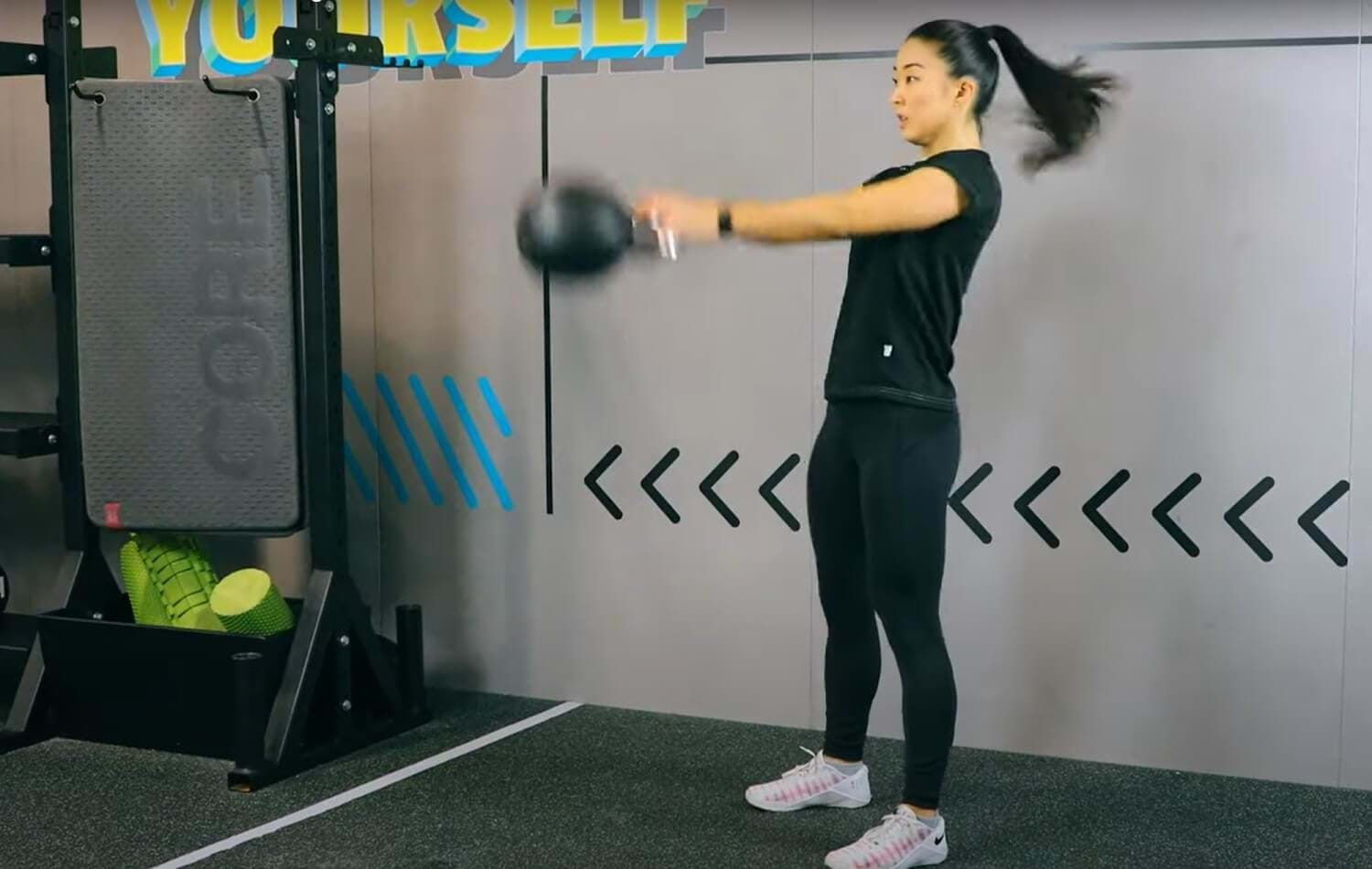Kettlebell Swings
What Is A Kettlebell Swing?

Kettlebell swings are a high intensity, full body exercise that builds strength and cardiovascular endurance. This exercise combines hip hinge movement with swinging a kettlebell in front of the body, to work the hamstrings, glutes, back, shoulders, and core.
Kettlebell swings work great as part of a strength workout as well as HIIT workouts and circuit training. Benefits of adding this exercise into your training include:
Power: Kettlebell swings are a plyometric exercise that builds explosive power.
Strength: Builds full body strength which can translate to better lifting performance.
Cardiovascular: Kettlebell swings work the cardiovascular system and can improve heart, lung, and circulatory health.
Coordination: Kettlebell swings build core strength and stability while improving the coordination of upper and lower body.
Calorie burn: They are a high intense, full body exercise which burns a lot of calories in a short time.
Commonly Asked Questions About Kettlebell Swings
Kettlebell swings are good for building full body strength, power, and coordination while working the cardiovascular system. They’re also a good exercise for burning calories. Try incorporating kettlebell swings into circuit training, as part of a warm up or as a finisher in your strength training workouts.
Kettlebell swings work the muscles in the posterior chain (hamstrings, glutes, erector spinae, rhomboids, and trapezius), as well as the core, forearms, and shoulders. They also work the heart and lungs.
There is no right weight for kettlebell swings. Choose a weight that is challenging but allows you to move the kettlebell with good form for your desired reps. As you get stronger, you can increase the weight.
Kettlebell Swing Tips
- Spend some time perfecting the hip hinge technique before working on kettlebell swings, as this is a key element.
- It can take a few reps to get into the right rhythm.
- Keep your core engaged throughout the swing to prevent arching the spine.
- Your grip should be firm, but not overly tight, to prevent unnecessary tension in the shoulders and neck.
Kettlebell Swing Variations

Two handed kettlebell swings are a great for beginners new to this exercise as well as advanced athletes.

One arm kettlebell swings are a unilateral variation which adds greater challenge to the core and shoulders.

Two handed kettlebell swings are a great for beginners new to this exercise as well as advanced athletes.
If you’re not sure if any of the above exercises are suitable for you, please consult your doctor before you start it. Need guidance on how to perform the exercise? Ask a personal trainer at your gym.